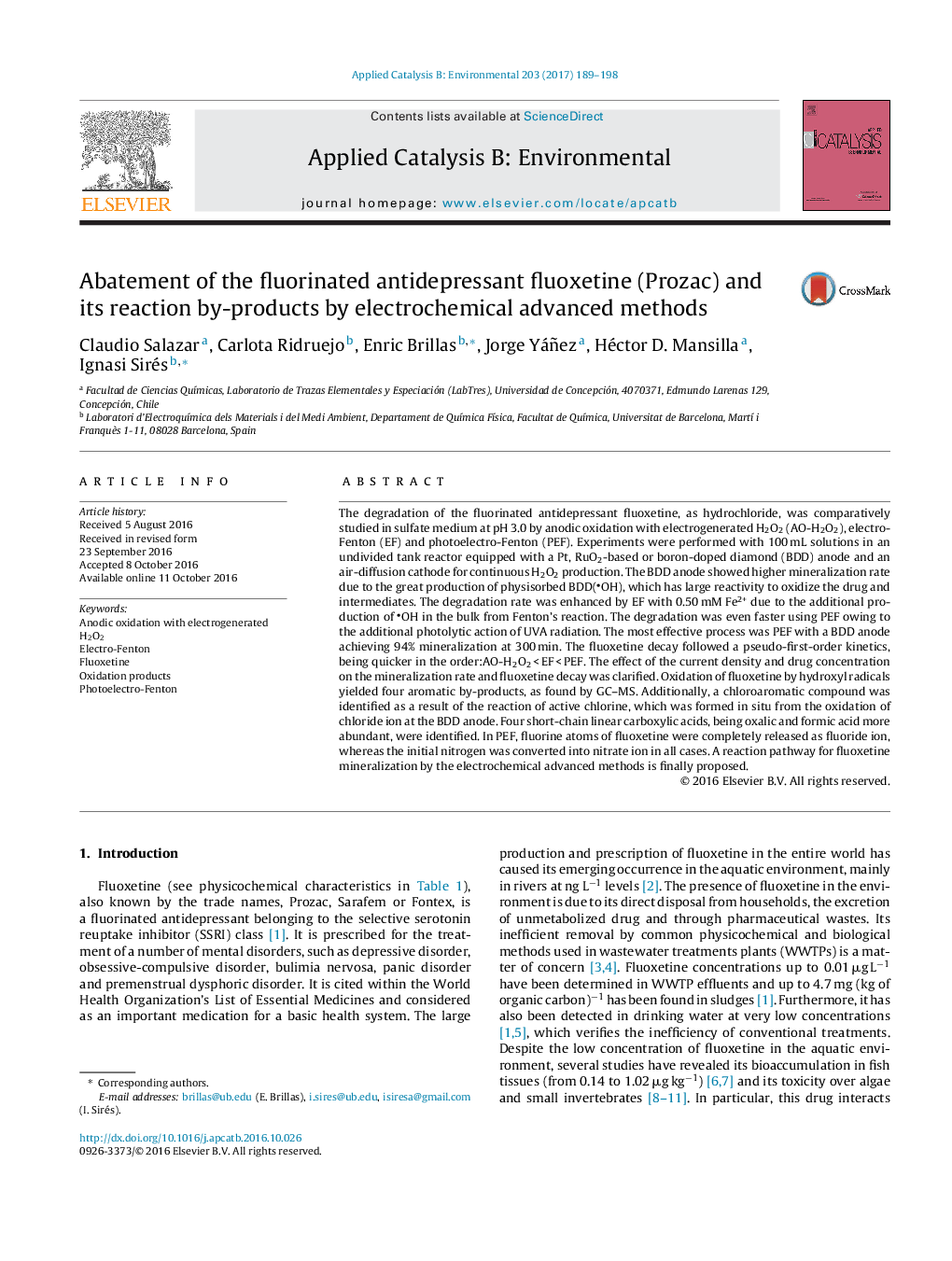| کد مقاله | کد نشریه | سال انتشار | مقاله انگلیسی | نسخه تمام متن |
|---|---|---|---|---|
| 6454438 | 1418817 | 2017 | 10 صفحه PDF | دانلود رایگان |

- Fluoxetine hydrochloride treated with Pt, RuO2-based or BDD anode and H2O2 generation.
- Faster mineralization by PEF with a BDD anode due to BDD(OH), OH and UVA light.
- Pseudo-first-order decay by AO-H2O2, EF and, more rapidly, by PEF using a BDD anode.
- Degradation of fluoxetine with Fâ and NO3â formation and partial Clâ oxidation to HClO.
- Detection of 4 primary aromatics, 1 chloroaromatic derivative and 4 carboxylic acids.
The degradation of the fluorinated antidepressant fluoxetine, as hydrochloride, was comparatively studied in sulfate medium at pH 3.0 by anodic oxidation with electrogenerated H2O2 (AO-H2O2), electro-Fenton (EF) and photoelectro-Fenton (PEF). Experiments were performed with 100Â mL solutions in an undivided tank reactor equipped with a Pt, RuO2-based or boron-doped diamond (BDD) anode and an air-diffusion cathode for continuous H2O2 production. The BDD anode showed higher mineralization rate due to the great production of physisorbed BDD(OH), which has large reactivity to oxidize the drug and intermediates. The degradation rate was enhanced by EF with 0.50Â mM Fe2+ due to the additional production of OH in the bulk from Fenton's reaction. The degradation was even faster using PEF owing to the additional photolytic action of UVA radiation. The most effective process was PEF with a BDD anode achieving 94% mineralization at 300Â min. The fluoxetine decay followed a pseudo-first-order kinetics, being quicker in the order:AO-H2O2Â <Â EFÂ <Â PEF. The effect of the current density and drug concentration on the mineralization rate and fluoxetine decay was clarified. Oxidation of fluoxetine by hydroxyl radicals yielded four aromatic by-products, as found by GC-MS. Additionally, a chloroaromatic compound was identified as a result of the reaction of active chlorine, which was formed in situ from the oxidation of chloride ion at the BDD anode. Four short-chain linear carboxylic acids, being oxalic and formic acid more abundant, were identified. In PEF, fluorine atoms of fluoxetine were completely released as fluoride ion, whereas the initial nitrogen was converted into nitrate ion in all cases. A reaction pathway for fluoxetine mineralization by the electrochemical advanced methods is finally proposed.
137
Journal: Applied Catalysis B: Environmental - Volume 203, April 2017, Pages 189-198